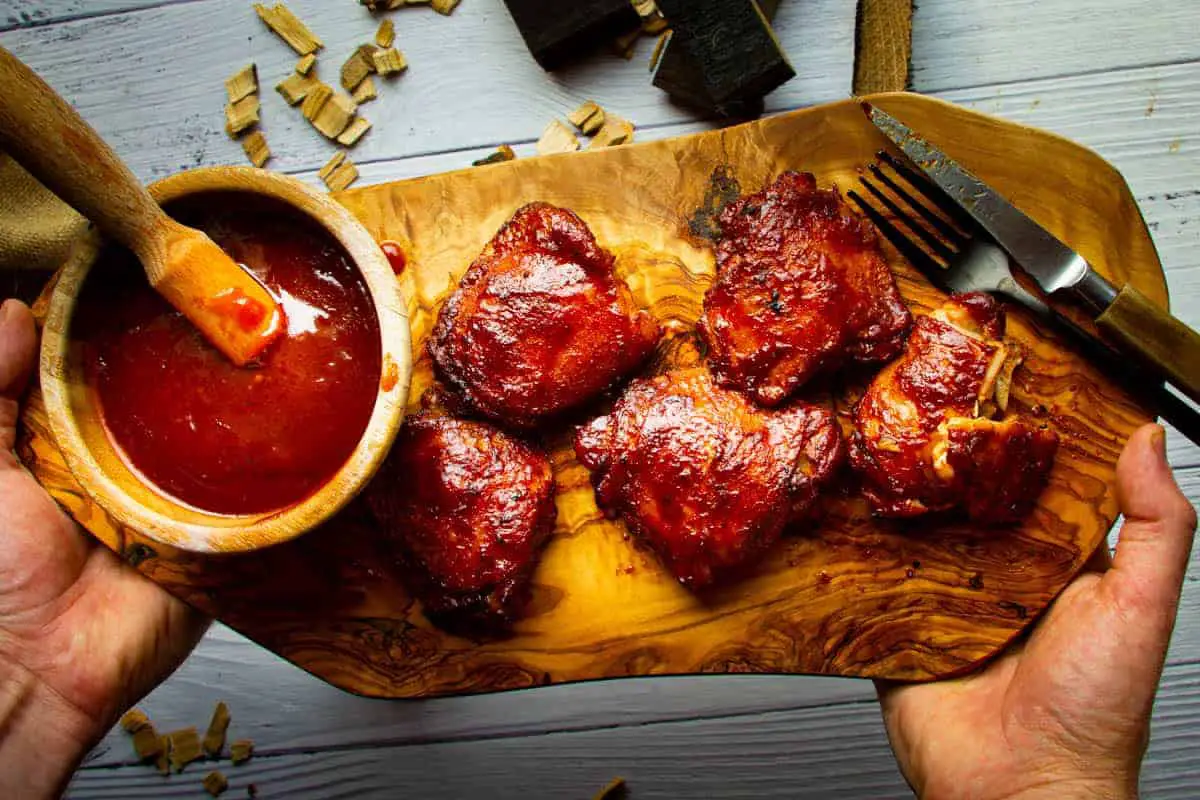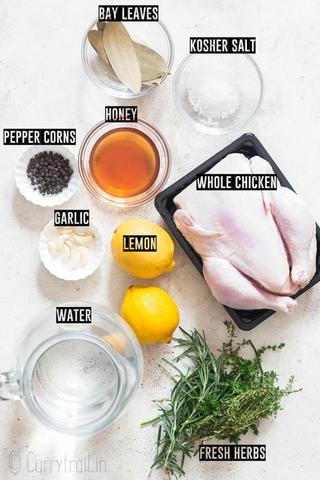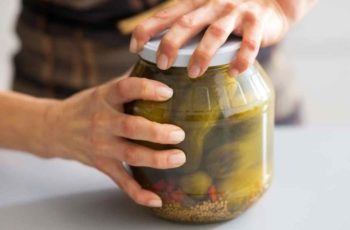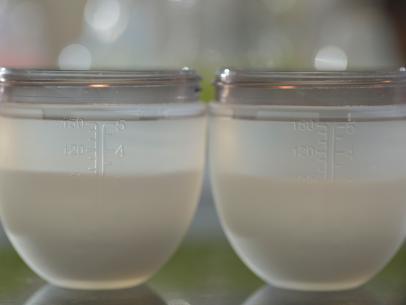
“Unraveling the Buttermilk vs. Half and Half Conundrum: Demystifying the Key Differences between these Dairy Products”
Buttermilk vs Half and Half: What’s the Difference?
Buttermilk and half and half are both dairy products made from cow’s milk, but they have distinct differences. Buttermilk is a fermented dairy product with a slightly sour smell and taste, higher acidity, and acts as a tenderizer in baked goods. It is made by chemically fermenting the milk with added cultures, making it more acidic and slightly sour tasting. On the other hand, half and half is a combination of whole milk and cream, resulting in a creamy milk product that is less thick than heavy cream. It has a rich milk flavor and can be used as a coffee creamer or in recipes where a less fattening choice is desired.
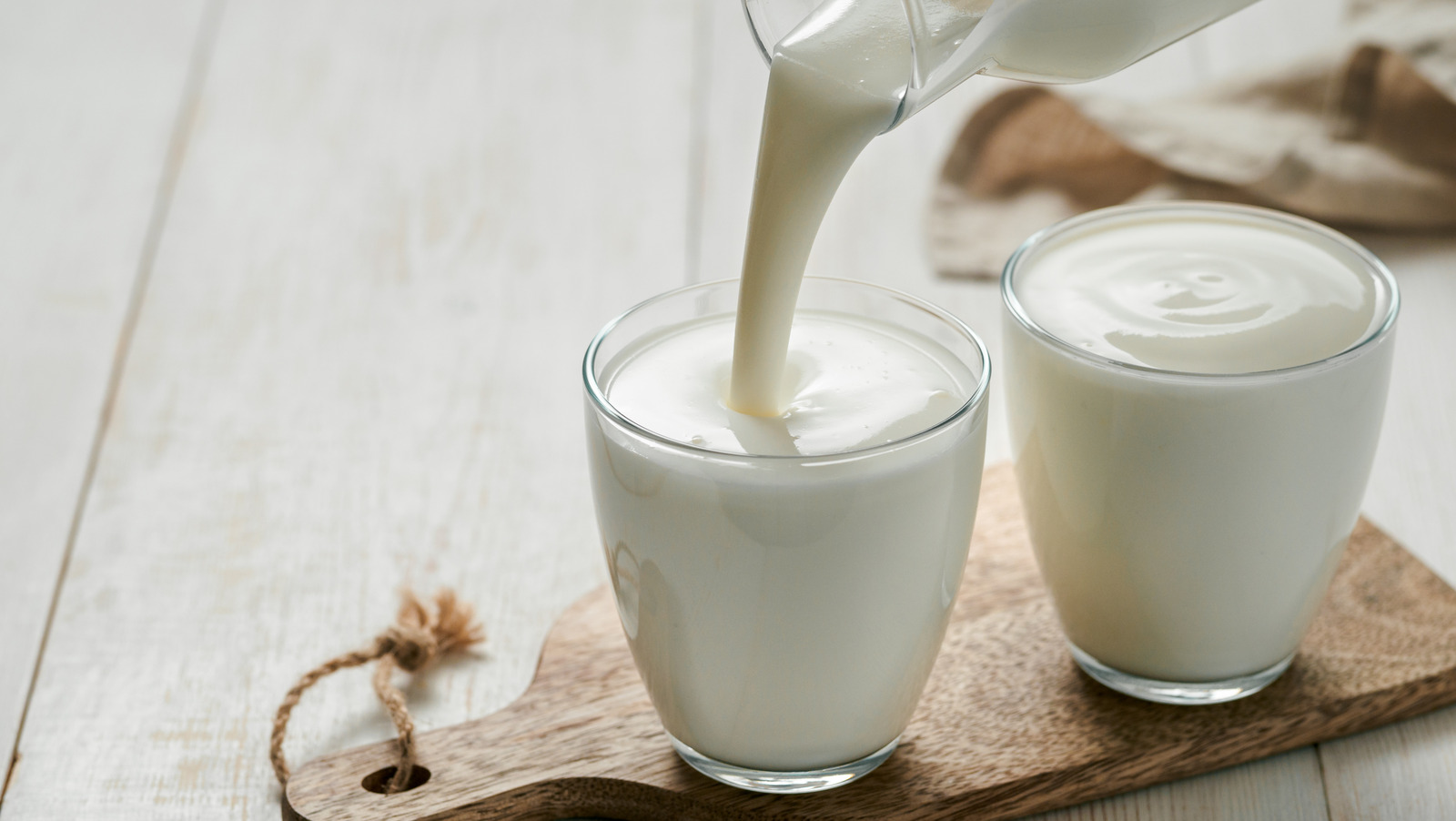
In terms of nutritional information, buttermilk has fewer calories (99 per cup) compared to half and half (315 per cup). Buttermilk also contains more carbohydrates (12 grams per cup) compared to half and half (10 grams per cup). Both contain natural sugars, with buttermilk containing 12 grams of sugar per cup and half and half containing 10 grams of sugar per cup.
The texture of these two dairy products also differs. Buttermilk has a thinner consistency, while half and half is thicker and creamier. Additionally, their flavors are distinct. While half and half has a rich milk flavor, buttermilk has a fermented and slightly spoiled taste to it.
Buttermilk and Half and Half Overview
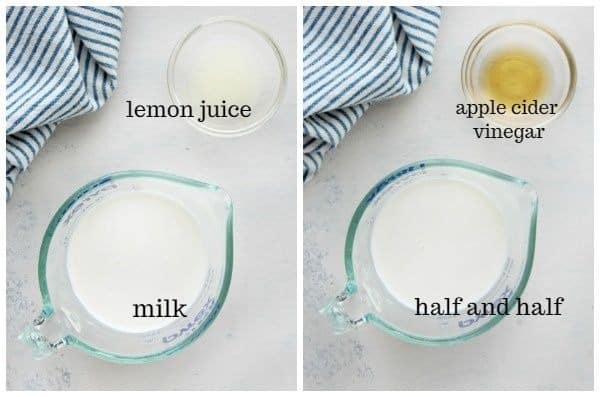
Buttermilk and half and half are two dairy products that are commonly used in cooking and baking. While they both come from cow’s milk, they have distinct differences in taste, texture, and nutritional content.
Buttermilk is a fermented dairy product with a slightly sour smell and taste. It acts as a tenderizer in baked goods due to its high acidity. Buttermilk is made by chemically fermenting milk and adding cultures to it. It has a thinner consistency compared to half and half and contains less fat. Despite its sour flavor, buttermilk lasts longer than most milk products because of the added cultures. Additionally, buttermilk may be suitable for those who are lactose intolerant due to the lactic acid breaking down the lactose.
On the other hand, half and half is a mixture of equal parts whole milk and cream. It has a creamier texture compared to buttermilk and a higher fat content. Half and half is commonly used as a coffee creamer or as a substitute for heavy cream when looking for a less fattening option. While it shares some nutritional qualities with both cream and whole milk, it cannot be whipped like heavy whipping cream.
What is Buttermilk?
Buttermilk is a fermented dairy product that offers a slightly sour smell and taste. It has a higher acidity compared to other milk products such as half and half. Originally, buttermilk was made by using the liquid separated during the churning process of making butter. The liquid was reserved and fermented, resulting in soured milk. Today, buttermilk is made by chemically fermenting the milk and adding cultures to it.
The acid in buttermilk helps in baked goods by reacting to other ingredients, making it a great leavening agent. Despite its sour taste and smell, buttermilk actually lasts longer than most milk products because of the added cultures. It also contains less fat than other milk or cream products and is rich in vitamins and minerals. Additionally, buttermilk may be suitable for individuals who are lactose intolerant due to the lactic acid present in it, which breaks down lactose.
What is Half and Half?
Half and half is a dairy product that is made by combining equal parts of whole milk and cream. It gets its name from the fact that it is made up of half milk and half cream. This combination results in a creamy and rich milk product that is slightly less thick than heavy cream. Half and half provides a balance between the richness of cream and the lower fat content of milk.
It is commonly used as a coffee creamer, providing a smooth and creamy texture to your morning cup of joe. It can also be used in various sweet and savory recipes, where you want to add some richness without the high fat content of heavy cream. However, it cannot be whipped like heavy whipping cream due to its lower fat content.
In terms of taste, half and half has a rich milk flavor that adds depth to dishes without overpowering them. It is a versatile ingredient that can be used in a wide range of recipes, making it a staple in many kitchens.
Is Half and Half the Same as Buttermilk?
No, half and half is not the same as buttermilk. While they are both dairy products made from cow’s milk, they have distinct differences in taste, texture, and nutritional content. Buttermilk offers a slightly sour smell and taste with a higher acidity than half and half. It is a fermented dairy product that acts as a tenderizer in baked goods. On the other hand, half and half is creamier than buttermilk and has a higher fat content. It is a combination of equal parts whole milk and cream, providing a balance between thickness and creaminess.
Buttermilk is lower in fat compared to half and half, making it a healthier option for those looking to reduce their fat intake. It contains added cultures that contribute to its acidic and slightly sour taste. In contrast, half and half has a rich milk flavor without the tanginess of buttermilk. It can be used as a coffee creamer or in recipes that call for cream but require less fat.
While both buttermilk and half and half can be used in cooking and baking recipes, their effects on various dishes differ significantly. Buttermilk’s added cultures and high acidity make it an excellent tenderizing agent in baking. On the other hand, half and half is commonly used as a substitute for cream when a lighter option is desired.
What’s the Difference Between Buttermilk and Half and Half?

Buttermilk and half and half are both dairy products made from cow’s milk, but they have distinct differences in taste, texture, and nutritional content. Buttermilk has a slightly sour smell and taste, along with a higher acidity than half and half. It is a fermented dairy product that acts as a tenderizer in baked goods. On the other hand, half and half is creamier than buttermilk and has a higher fat content. It is a combination of whole milk and cream, providing a balance between thickness and creaminess.
In terms of nutritional information, buttermilk has fewer calories than half and half (99 calories per cup compared to 315 calories). Buttermilk also contains less fat than other milk or cream products, making it a healthier option. However, it has slightly more carbohydrates (12 grams per cup) compared to the 10 grams found in one cup of half and half. Both dairy products contain a small amount of natural sugar.
The texture of buttermilk is thinner compared to the thicker and creamier consistency of half and half. The flavor difference is also significant, with buttermilk having a fermented taste while half and half has a rich milk flavor. These differences make them suitable for different uses in cooking and baking recipes. Buttermilk is often used as a tenderizing agent due to its added cultures and high acidic level, while half and half is commonly used as coffee creamer or in recipes that call for cream but with less fat.
Calories
Buttermilk has fewer calories than half and half with only 99 calories per cup, compared to the 315 contained in half and half. The lactose, or milk sugar in dairy products make carbohydrates. Buttermilk has a little more carbs at about 12 grams per cup compared to the 10 grams found in one cup of half and half. Both half and half and buttermilk contain a small amount of sugar at about 10 grams and 12 grams per cup, respectively. Remember the sugar in these dairy products is natural and not added.
Carbohydrates
Buttermilk and half and half both contain carbohydrates, which come from the lactose or milk sugar in dairy products. Buttermilk has slightly more carbs than half and half, with approximately 12 grams per cup compared to the 10 grams found in one cup of half and half. However, both of these dairy products have a relatively small amount of natural sugar, with about 10-12 grams per cup. It’s important to note that the sugar in these dairy products is not added sugar but rather naturally occurring in milk.
Sugar
Buttermilk contains about 12 grams of carbohydrates per cup, while half and half contains about 10 grams. Both dairy products also contain a small amount of natural sugar, with buttermilk having 12 grams per cup and half and half having 10 grams. It’s important to note that the sugar in these dairy products is not added but rather naturally occurring from lactose, or milk sugar.
Texture
Buttermilk has a thinner consistency compared to half and half. It is more liquid-like and has a smooth texture. This thin texture makes it easier to incorporate into baking recipes and allows it to act as a tenderizer in baked goods. On the other hand, half and half has a much thicker and creamier texture. It is richer and denser than buttermilk, giving it a velvety smoothness. The creamy texture of half and half makes it ideal for adding richness to coffee or other recipes that call for cream.
Flavor
Buttermilk has a fermented and almost spoiled taste to it, which some may find unappealing. It offers a slightly sour flavor that adds tanginess to dishes. On the other hand, half and half has a rich milk flavor that is creamy and smooth. It provides a more indulgent taste compared to buttermilk.
When comparing the nutritional information, buttermilk contains fewer calories than half and half, with only 99 calories per cup compared to the 315 calories in half and half. Buttermilk also has a little more carbohydrates at about 12 grams per cup, while half and half contains around 10 grams. Both contain a small amount of natural sugar, with buttermilk having 12 grams per cup and half and half having 10 grams.
The texture of both buttermilk and half and half differs significantly. Buttermilk has a thinner consistency compared to the thicker and creamier texture of half and half. This difference in consistency affects how they blend into recipes and their overall mouthfeel when consumed.
Uses
Buttermilk is commonly used as a tenderizing agent in baking. Its acidity helps to react with other ingredients, resulting in light and fluffy baked goods. It is often used in recipes for pancakes, biscuits, and cakes to achieve a moist texture and enhance the flavor.
Half and half is frequently used as a coffee creamer due to its creamy consistency and rich milk flavor. It can also be added to soups, sauces, and desserts to provide a smooth and velvety texture. In savory dishes, half and half can be used as a substitute for heavy cream when a lighter option is desired.
Can You Substitute Half and Half for Buttermilk and Vice Versa?
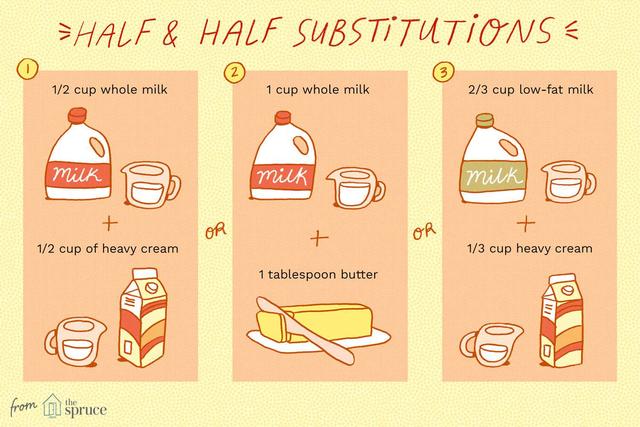
Yes, you can substitute half and half for buttermilk and vice versa in certain recipes. However, it is important to consider the differences in taste, texture, and acidity between the two dairy products.
If a recipe calls for buttermilk and you only have half and half available, you can create a substitute by adding vinegar or lemon juice to the half and half. This will mimic the acidic properties of buttermilk and provide similar results in baked goods.
On the other hand, if a recipe requires cream or creamer and you don’t have any on hand, you can use buttermilk as a substitute for half and half. However, keep in mind that buttermilk has a sour taste which may affect the overall flavor of your dish.
Final Thoughts
In conclusion, it is important to understand the differences between buttermilk and half and half when cooking or baking. While they are both dairy products made from cow’s milk, they have distinct tastes, smells, textures, and reactions to food. Buttermilk has a sour and slightly spoiled flavor due to fermentation and added cultures, making it a great tenderizer in baked goods. On the other hand, half and half is creamier and thicker than buttermilk with a rich milk flavor. It is often used as a coffee creamer or as a substitute for heavy cream in recipes.
When it comes to nutritional information, buttermilk is lower in calories and fat compared to half and half. However, both contain natural sugars and carbohydrates. The texture of buttermilk is thinner while half and half has a thicker, creamier consistency.
Although buttermilk can be substituted for half and half in certain recipes by adding vinegar or lemon juice to mimic its acidity, it may not be suitable as a coffee creamer or in recipes where the richness of cream is desired. Understanding the unique qualities of each product will help you make informed choices when cooking or baking.
In conclusion, buttermilk and half and half are two distinct dairy products with different compositions and uses. Buttermilk is a fermented milk product with a tangy flavor, while half and half is a blend of equal parts whole milk and cream. They cannot be used interchangeably in recipes or beverages that require specific fat content or acidity levels. Understanding their differences can help ensure accurate results when cooking or baking.
Learn More About Grilling
If you want to learn more about grilling, check out these other helpful resources!

